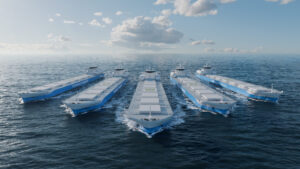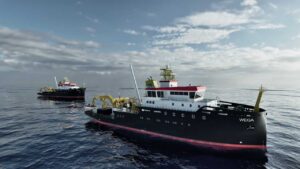Japanese-based MI LNG Company (MI LNG), a jointly operated LNG carrier engineering company owned by Imabari Shipbuilding and Mitsubishi Heavy Industries, Ltd. (MHI), announce that the two companies starting in July agreed to perform engineering of conventional vessels other than LNG (liquefied natural gas) carriers on consignment from Nihon Shipyard, augmenting MI LNG’s earlier business relating to LNG carriers.
The agreed engineering business is to include functional engineering of both traditionally fueled ships and conventional vessels that adopt alternative fuels such as LNG, as well as partial engineering of LCO2 (liquefied carbon dioxide) carriers to be jointly developed by Mitsubishi Shipbuilding, part of MHI Group, and Nihon Shipyard.
The two companies mention, that as initiatives toward decarbonization accelerate in the maritime industry, demand is growing for construction of LNG-fueled ships as an interim solution until conversion to new fuels is achieved.
At the same time, demand is also taking shape for vessels running on alternative fuels such as ammonia and methanol.
Meanwhile, LCO2 carriers are garnering attention as effective means for transporting captured CO2 safely and in large volumes, and demand for such ships is also expected to grow in the years ahead.
Imabari Shipbuilding with this agreement aims to strengthen its engineering functions in order to drive further business expansion in ship construction at Nihon Shipyard, which it jointly operates with Japan Marine United Corporation, and to put the company in a solid position to take orders in these various new fields, it is stated.
Through Mitsubishi Shipbuilding, which handles business in ship construction and marine engineering, MHI Group today undertakes business in equipment provision and engineering of fuel gas supply systems for LNG-fueled ships applying its gas-related technologies accumulated through construction of liquefied gas carriers.
Going forward, Mitsubishi Shipbuilding will continue to apply MHI’s component technologies in growth areas such as new fuel conversion and LCO2 carriers toward achieving their early commercialization.



